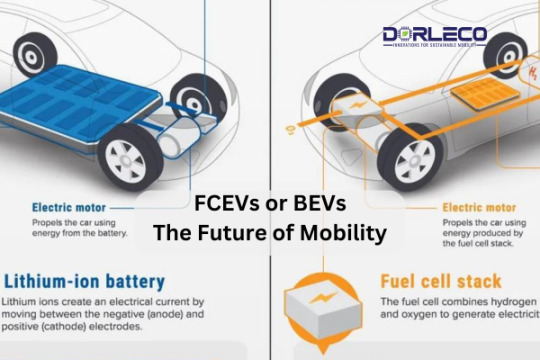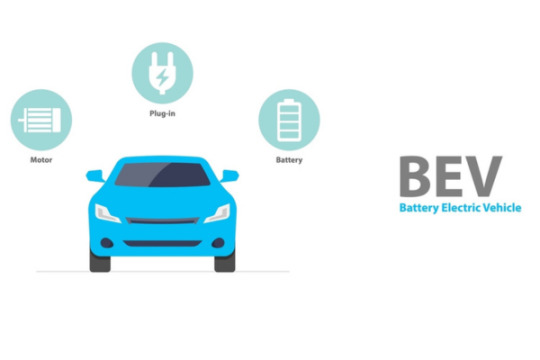#BEVS
Photo

Work by Scrap in a DTLA alley.
#scrap#tgl#tglcrew#bevs#scraptgl#scrapgraffiti#mvr#isc#mural#art#laart#urbanart#streetart#arteurbano#artecallejero#streetartla#streetartlosangeles#losangelesstreetart#lastreetart#streetarteverywhere#streetartdaily#streetartphotography#instastreetart#losangeles#impermanentart#dtla#southpark#southparkdtla#dtlastreetart
82 notes
·
View notes
Text

"stay frosty royal milk tea"
5 notes
·
View notes
Text
FCEVs or BEVs-The Future of Mobility
March 26, 2024
by dorleco
with no comment
Autonomous Vehicle Technology
Edit
FCEVs or BEVs

Introduction
As we already know, automakers are turning to alternative energy sources to power their vehicles due to the depletion of fossil fuel deposits and the negative environmental effects of their combustion. These energy sources must be varied and sustainable, including fuel cell electric cars (FCEVs) and battery electric vehicles (BEVs).
There is much discussion about whether BEVs should take precedence over FCEVs, even if the automobile industry has already begun to look at sustainable alternatives. This is especially true given the finite supply of lithium, a key component of lithium-ion batteries. As a result, a lot of researchers are supporting the use of fuel cells, which use a redox reaction’s chemical reaction to produce energy. However, most automakers are still cautious about using fuel cells in production vehicles since research and development are still being done on how they behave in automotive batteries.
This article aims to address these concerns about the FCEVs or BEVs debate.
The Relationship between FCEVs or BEVs
In this specific argument, a common misperception is that fuel cells and lithium-ion batteries are rival technologies. It’s critical to realize that batteries, as one of the main energy sources, are here to stay in business for a very long time.
Lithium-ion and fuel cell technologies offer a range of solutions to address issues related to sustainability, pollution, and efficiency. These two substances seek to improve the answers to the electrification dilemma that the sector is now dealing with. Fuel cells are expected to complement batteries rather than replace them as the main component of the electrified solution in the future.

Difficulties in the Current Market
when discussing sustainable mobility, range is often the first factor to be questioned, particularly when discussing heavy-duty transportation. Very high-payload capacity combustion engine vehicles often have a big fuel tank, roughly 200–300 liters (50–80 gallons). This frequently enables them to travel 400 miles (depending on the payload) before needing to halt for a fuel stop. But while fuel cells and lithium-ion cells are still in their infancy, none of the technologies has yet been able to match the range requirements of heavy-duty transportation.
Furthermore, a high-capacity battery is probably going to be hefty, which raises the load and thus the energy requirement. For example, the battery in the Hummer EV is expected to weigh the same as the battery in the Honda Civic. High-energy-density batteries, sometimes known as fuel cells, are one way to break this vicious cycle.
Automotive designers will face a unique issue when it comes to heavy-duty transport because there are a lot of trade-offs when adopting Li-ion cells. The maximum permitted weights on each axle are currently capped at a lower level, which forces designers to decrease battery capacity, which reduces range.
It also reduces the amount of load a vehicle can transport on a given trip when the payload capacity is restricted, which is not exactly good logistical economics. Ultimately, automakers will always have to make a trade-off between efficiency and performance.
It is not exactly ideal logistical economics, as it also lowers the amount of load a truck can transport on a given journey when the payload capacity is limited. In the end, automakers will always have to choose between performance and efficiency.
FCEVs or BEVs
One of the reasons FCEVs presently outperform BEVs is downtime. An internal combustion engine vehicle (ICEV) requires approximately twice as much time to refill as a fuel cell electric vehicle (FCEV), which makes it a desirable option for lengthy road trips.
Creating megawatt-scale charging stations would be the answer to this problem for BEVs. Because drivers can stop as often as necessary for charging, shortening the charging period also enables designers to minimize the size (and weight) of the battery.
The ability to use renewable energy solutions more widely and hasten the adoption of sustainable power sources is another significant benefit of FCEVs. Additionally, they fill in the performance and operational deficiencies in the current batteries. When it comes to driving a style that primarily involves long-distance travel, like commercial vehicles, FCEVs can generally outperform BEVs.

Moreover, fuel cell electric vehicle (FCEV) payload capacity surpasses that of a battery electric vehicle (BEV) due to the fuel cell powertrain’s substantial weight reduction, which permits engineers to enhance the energy capacity without appreciably changing the vehicle’s overall weight. The capacity of a lithium-ion battery to satisfy the powertrain’s dynamic needs is by far its greatest advantage over a fuel cell.
Fuel cells are designed for non-dynamic/static behavior, while numerous combinations for dynamic behavior may be produced at this time. It is hoped that shortly, solid-state cell solutions for mobility will be developed by researchers in the lithium-ion battery business.
So, which is superior in every situation?
The argument over whether BEVs are preferable to FCEVs or vice versa should be seen from a different angle since it comes down to whatever technology is best suited for a certain set of transportation requirements. A greater portion of the industry can be served by BEVs, but sustainable FCEV solutions can address their drawbacks.
FCEVs with lighter powertrains can have greater range since they can hold more energy without adding to their total weight. Fuel cells are an appealing option for heavy-duty and long-distance applications because of their increased payload-bearing capability and faster charging (or refilling) times.
The disadvantage of a fuel cell is that hydrogen requires a lot of energy to produce and store, and fuel cell technology is still in its infancy. This means that fuel cells are more expensive than lithium-ion batteries. Lithium-ion batteries also have far superior dynamic behavior than fuel cells. By no means are BEVs and FCEVs two sides of the same coin. Rather, it is necessary to consider them as two distinct avenues that might be pursued to address the same issue—that is, the difficulties associated with sustainable mobility.
Initiatives for BEV and FCEV at Dorleco
At Dorleco, we create software based on models for battery chemicals and fuel cells. Development-wise, we are focusing on cell balancing algorithms and Kalman filter-based SOC estimate techniques, along with thermal modeling and control of these energy sources.
The focus is on the BMS controller and fuel cell controller integration on a CAN architecture, as well as battery validation and verification using charging and discharging experiments. Using Raptured tools, we can assist you with rapid control prototyping for battery systems as well.
Write to [email protected] to find out more about our software development skills for requirements unique to batteries and explore our best VCU products and services.
0 notes
Link
#batteryelectricvehicles#BEVs#Brussels#BYD#BYDToyotaEVTechnology#carbonneutralityby2035#FAWToyotaMotor#Futurride#LFP#lithiumironphosphate#sustainablemobility#Toyota#ToyotabZ4X#ToyotaEurope#ToyotaFT-Se#ToyotaKenshikievent#ToyotaSportCrossover#ToyotaUrbanSUV#Toyota’sFT-3e
1 note
·
View note
Link
The country encourages the transition to new technologies The Japanese government plans to reduce corporate taxes for companies actively investing in various strategic sectors. We are talking about the production of innovative semiconductors, electric vehicles, and high-capacity storage batteries. According to information published by TASS with reference to Sankei, new legislation aimed at stimulating such investments is planned to be introduced in the 2024 financial year. [caption id="attachment_82299" align="aligncenter" width="780"] electric vehicles[/caption] Manufacturers of semiconductors, electric vehicles, batteries and “green steel” The list of strategically important industries includes the development and production of aviation biofuel with low carbon dioxide emissions. Also included in the tax reduction are producers of “green steel” with reduced carbon dioxide emissions and producers of “green chemicals” based on environmentally friendly materials. Japan plans to completely eliminate industrial and automobile carbon dioxide emissions by 2050, and by 2030 to reduce them by 46% compared to 2013 levels. These steps aim to create a more environmentally sustainable future economy.
#battery_electric_vehicles#BEVs#charging_infrastructure#electric_car_manufacturers#electric_cars#electric_mobility#electric_transportation#electric_vehicle_charging#electric_vehicle_technology#electric_vehicles#EVs#PHEVs#plug_in_hybrid_vehicles
0 notes
Text
We as a society are obsessed with margaritas. And I’m not dissing on the margarita. I too love a good marg. But why is it this drink that we have chose. Even calling it a marg feels too familiar. Her full name is margarita, but we feel like we are close enough to her to call her marg. We don’t do this with other drinks (at least to my knowledge) just miss marg
#funny#joke#margarita#I had a point going into this#lost it#i have no idea#drinks#bevs#marg#spicy margarita#tequila#college girl#college things
1 note
·
View note
Text

Dark thunder energy drink from Aldi
0 notes
Text
Jack Daniel's trademark fight over dog toy goes to U.S. Supreme Court
New Post has been published on https://petn.ws/H3r9d
Jack Daniel's trademark fight over dog toy goes to U.S. Supreme Court

WASHINGTON, March 22 (Reuters) – The U.S. Supreme Court on Wednesday is set to hear a trademark clash between Jack Daniel’s and a dog accessory company behind a parody chew toy resembling the distiller’s widely recognized black-label whiskey bottle. The dispute pits the whiskey brand’s trademark rights against legal protections for creative expression – in […]
See full article at https://petn.ws/H3r9d
#DogNews #BACT, #Be8217, #BEV, #BEVS, #Bitter, #Biz, #CASE1, #CLJ, #CMPNY, #CPROD, #CYCS, #CYCS08, #Fin, #FINS, #FINS08, #FIVEHUNDRED, #FOBE, #Gen, #HEAINS, #INSR, #Intent, #IPROP, #Judge, #Law, #Legal, #LINS, #LIQS, #LIQS1, #MNGISS, #NCYC, #NEWS1, #POL, #Private, #PUBL, #PXP, #Rare, #REGS, #RET, #REUTERSLEGAL, #RHPIHEALTHINSURANCE, #RSBILITIGATION, #SCOTUS, #Shop, #SHOPAL, #SPCRET, #SUSTAINABLEBUSINESS, #Us, #Wash
#BACT#be&8217;#BEV#BEVS#bitter#biz#CASE1#CLJ#CMPNY#CPROD#CYCS#CYCS08#fin#FINS#FINS08#FIVE HUNDRED#FOBE#gen#HEAINS#INSR#intent#IPROP#judge#law#legal#LINS#LIQS#LIQS1#MNGISS#NCYC
0 notes
Text
BMW sells 41,886 BEVs in China in 2022, up 91.6% from 2021

BMW said it will accelerate its electrification this year, bringing 11 BEV models to Chinese customers.

(Image credit: BMW)
German luxury carmaker BMW's battery electric vehicle (BEV) sales in China jumped last year, though it still lags behind its local rivals.
BMW sold 41,886 BEVs in China in 2022, up 91.6 percent from a year earlier, the company said yesterday.
The automaker said it delivered 791,900 BMW- and MINI-branded vehicles in China in 2022. That means BEVs contributed about 5 percent of the BMW Group's sales in China.
BMW launched five BEV models in China in 2022, including the BMW i7, new BMW i3, BMW i4, BMW iX and BMW iX3.
Of these, 13,310 units of the new BMW i3 have been delivered since its launch in late March 2022, according to the company. The model is currently only available in China and is produced at BMW's Lydia plant, the third vehicle plant at the Shenyang production site in northeast China's Liaoning.
The BMW i3 has a suggested retail price of RMB 349,900 ($51,650), and dealers are currently offering tens of thousands of yuan in discounts, according to quotes shown on several auto websites in China.
BMW will accelerate its electrification this year, bringing 11 BEV models to Chinese customers, including the BMW iX1, Rolls-Royce SPECTRE and BMW Motorrad CE04, the company said.
BMW delivered a total of 2,399,636 BMW, MINI and Rolls-Royce-branded vehicles worldwide in 2022.
Of these, the BMW brand's sales were 2,100,692 units and sales of BEV models under the BMW and MINI brands increased by more than 100 percent year-on-year to 215,755 units.
BMW is increasing its bets in China, the world's largest electric vehicle market.
On October 16, 2022, Bloomberg reported that BMW will stop producing the electric version of the MINI hatchback in the UK and move production to China.
While the MINI plant near Oxford, England, will again produce convertibles starting in 2025, BMW has opted to produce electric hatchbacks and small SUVs in China through a partnership with Great Wall Motor, the report said, citing a spokesman.
On November 14, BMW announced a major expansion of power battery production at its Shenyang production site. The project is invested by BMW Brilliance, BMW's joint venture in China, with a total investment of approximately RMB 10 billion.
Despite BMW's significant BEV sales growth in China in 2022, it is still small compared to automakers focused on BEV production.
For the full year 2022, Tesla (NASDAQ: TSLA) delivered 439,770 vehicles in China, more than 10 times BMW's BEV sales in the country.
Local premium brand NIO (NYSE: NIO) delivered 122,486 vehicles in 2022, also higher than BMW's BEV sales in China.
Source link
Read the full article
0 notes
Text





Will and Beverly in Season 1 of Hannibal
2K notes
·
View notes
Photo

An adventure for wine and food! Had a lovely time with @colinsimpson1886 if only ya weren’t a million miles away! #allthewine #winetime #wine #north #scotland #bevs #charcuterie #meatandcheese #meatandcheeseboard #burger #haggis #buckfast #bucky #scottishborders #pals #adventure #traintimes #christmaslights #lights #city #edinburgh https://www.instagram.com/p/ClyQQ2arolY/?igshid=NGJjMDIxMWI=
#allthewine#winetime#wine#north#scotland#bevs#charcuterie#meatandcheese#meatandcheeseboard#burger#haggis#buckfast#bucky#scottishborders#pals#adventure#traintimes#christmaslights#lights#city#edinburgh
1 note
·
View note
Text

I thought these were discontinued because I couldn’t find them anywhere!! But I went to a new corner store today and they had them!
I don’t even know if I like them or not … but the one on the right tastes like liquid lucky charms and I can’t stop drinking it.
#my collection of cans is getting almost embarrassing I need to get the cut proof gloves so I can do my craft project with them#i was so excited to see these I didn’t even check to see if the store had the rare monsters I’ve been looking for#also: I introduced my mum to monster ultra gold (pineapple) and she loved it so much she ordered a case from Amazon#me#bevs#they are sugar free
0 notes
Text
BEVs and PHEVs: Differences and benefits
February 27, 2024
by dorleco
with no comment
Autonomous Vehicle Technology
Edit

Introduction
It’s important to understand the many kinds of electric vehicles available whether you’re thinking about buying an EV for the first time or upgrading your current one. The most crucial fact to be aware of is that there are two main types of electric cars: BEVs and PHEVs. We’ll go over the distinctions between the BEVs and PHEVs as well as the benefits and drawbacks of BEVs and PHEVs in this post.
What is a PHEV?
An electric motor and internal combustion engine work together to power hybrid cars. How does one define a hybrid? Conventional hybrids recharge using technologies like regenerative braking and interchangeably run on gas or electricity. A PHEV: What is it? A plug-in hybrid electric vehicle, or PHEV, is a car that runs entirely on electricity for short distances. Plug-in hybrid electric vehicles require an additional power source, such as a home or public charging station, to recharge their larger and more powerful battery than a traditional hybrid.
In a PHEV, the gas-powered engine can function as a backup, taking over if the battery runs out of electricity. When comparing BEVs and PHEVs options, some St Louis Park drivers may experience range anxiety that this backup can help to ease.
What is a BEV?

If you want to completely stop using gasoline, a BEV is what you need. A BEV: What is it? A BEV is a battery-electric car that has a bigger motor and battery pack than a plug-in hybrid electric car (PHEV). The main distinction between a BEV and a PHEV is that the former runs exclusively on electricity and has no emissions. Among the advantages of electric vehicles are:
Because electric automobiles don’t have exhaust systems, they produce no harmful emissions.
Because a BEV doesn’t use engine oil, oil changes are not necessary.
The absence of an internal combustion engine in an electric vehicle (EV) makes driving on the roads in and around Minneapolis quieter and more peaceful.
On the highways in the Golden Valley area, you may still experience rapid acceleration because modern BEVs can produce torque almost instantly.
Numerous BEV models qualify for a state or federal tax credit.
Benefits of a BEV
1. Simplicity
One of the main benefits of the BEV is its simplicity. A battery-electric vehicle requires very little maintenance because it has so few moving parts. Because there aren’t any other fluid changes or oil changes, like engine oil, a BEV only needs a few tune-ups. Just plug it in and get going!
2. Cost-savings
The savings from fewer maintenance costs can add up to a sizable sum throughout the vehicle’s lifetime. Additionally, compared to electric power, fuel costs are typically higher when utilizing a gas-powered combustion engine. The total cost of ownership for an electric automobile during its battery lifespan can be similar to, or even more expensive than, that of a BEV, depending on how the vehicle is used.
3. Benefits of Climate
You can be secure in the knowledge that you’re making a positive environmental impact by switching to electric vehicles from gas-powered ones. Along with harmful substances including nitrous oxides, volatile organic compounds, fine particulate matter, carbon monoxide, ozone, and lead, internal combustion engines emit CO2 emissions that warm the globe.

Additionally, JuiceEco, which combines EV charging electricity use with zero-emission, 100% renewable energy, allows drivers of electric vehicles to further reduce their carbon footprint.
4. Fun
Riding a fully electric vehicle is undoubtedly enjoyable. People who own electric vehicles are rather pleased with them because of the quiet acceleration, the absence of foul-smelling tailpipe emissions, and the smooth steering. 96% of EV owners said they have no intention of switching back to gas.
Disadvantages of BEV
Range Anxiety
After a set number of kilometers, BEVs need to be recharged because of their limited operational range. For those who need to travel frequently or have lengthy travel plans, this could be a drawback.
Inadequate Infrastructure for Charging
Compared to gas stations, there are fewer BEV charging stations available.
Therefore, if charging is not available at home or the workplace, owning a BEV may be difficult.
Greater Starting Expense
In general, BEVs are more expensive upfront than conventional cars.
Benefits of a PHEV

1. Up-front costs (for now)
Most of an electric car’s initial cost is related to its battery. PHEVs often have cheaper upfront expenses than BEVs since they have smaller batteries.
However, as previously indicated, a PHEV’s lifespan expenditures may increase due to the cost of gas, maintenance for its internal combustion engine, and other non-electric components.
The lifetime expenses will go down the more you drive electric; therefore, if your plug-in hybrid is fully charged and you typically take short journeys, you should be able to drive for extended periods without using gas.
The average driver travels 25.9 miles per day in their automobile, and 91% of all car trips are less than 20 miles, according to the most recent National Household Travel Survey.
The majority of PHEVs on the market can drive this distance on electricity. We anticipate that the initial costs of all-electric vehicles will decrease in the future as battery technology advances.
2. Flexibility
Although owners of plug-in hybrids will want to keep their batteries charged frequently to take advantage of the cost savings associated with using electricity, they are not obligated to do so to use the car.

Because PHEVs often have a lower electric range, gas will be required. For certain drivers who might be nervous about charging their EV while driving or who have range anxiety, this is a benefit.
As more and more public charging stations become available, we expect that this will soon change. Of course, having a top-notch home charger will eliminate the need for you to worry about juicing while on the move!
3. Choice
PHEVs outnumber BEVs in the market at the moment. Thirty-two plug-in electric hybrid cars (PHEVs) were on the market in the United States as of September 4, 2021.
While Volvo and Audi each offer three PHEV vehicles, BMW offers five. There were 19 battery-electric car models and 26 total, including model variants, on the market in the United States as of January 9, 2021.
Among the firms selling BEVs are Ford Mustang, Tesla, and others.
4. Faster charging
The 120-volt level 1 charger that most battery electric cars come with is typical, however, it might take a very long time to fully charge the car.

Disadvantages of PHEVs
Reduced Effectiveness
PHEVs are less efficient than BEVs that only run on batteries since they require both gasoline and batteries.
Increased Upkeep Expenses
PHEVs require more maintenance than BEVs since they have more moving parts.
Heavier and Less-streamlined Design
PHEVs are heavier vehicles with a bulkier hybrid powertrain, giving them a less streamlined appearance.
CONCLUSION:
In conclusion, a comparison of BEVs and PHEVs demonstrates clear benefits and contrasts, with each vehicle type meeting a variety of demands and preferences in the field of electric transportation.
Because BEVs only run on electric batteries, they have no exhaust emissions, which makes them perfect for people who want to lessen their carbon footprint and for the environment.
Compared to PHEVs, they have a greater all-electric range, which makes them appropriate for shorter journeys and daily commutes without the need for gasoline.
Furthermore, because their drivetrains are simpler and have fewer moving parts, BEVs usually require less maintenance.
PHEVs, on the other hand, provide adaptability and do away with range anxiety by combining electric propulsion with an internal combustion engine.
They are more flexible to accommodate a greater variety of driving styles and lifestyles since they offer the comfort of gasoline for longer trips or in situations where charging infrastructure is scarce.
For people who are reluctant to switch entirely to electric vehicles, plug-in hybrid electric vehicles (PHEVs) provide a halfway ground between conventional and electric driving.
Though to differing degrees, BEVs and PHEVs both help to lower greenhouse gas emissions and reliance on fossil fuels.
The decision between the two is influenced by several variables, including driving habits, the accessibility of charging infrastructure, environmental considerations, and individual preferences.
The market for electric vehicles is constantly changing due to advancements in technology, infrastructure, and consumer demand.
This means that there are more options available and the viability of electric transportation as a sustainable alternative to conventional internal combustion engine vehicles is improving.
The basic objective of cutting carbon emissions and lessening environmental effects is still crucial in the shift to a greener and more sustainable future for transportation, regardless of whether a person chooses a BEV or PHEV.
#BEVs#VCU#Powertrains#PHEVs#EVCharging#Dorleco#ADAS#Electricmotor#EVs#Hybridelectricvehicles#Electrigenerator
0 notes
Photo

Audi Q8 e-tron 2023 Sportback kommer att göra sin världspremiär den 9 november med mindre kosmetiska förändringar samt subtila uppgraderingar av kabinen. Dessutom skulle crossovern kunna erbjudas med cirka 599km elektrisk räckvidd. #Audi #AudiQ8etron #Q8etron #BEVs #ev #elbil #nyheter #Nollutsläpp #bilverket https://www.instagram.com/p/CknGmH3on6Z/?igshid=NGJjMDIxMWI=
0 notes

